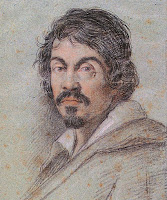Woven Paintings
 |
| The Devonshire Hunting Tapestries on display |
Two noblemen on horseback
accompanied by their servant and hunting dogs move towards the female bear. She
has been flushed out of her cave with her cubs. As the cubs escape, one of the
noblemen puts a spear into her chest, while she grapples with the hunting dogs
the other nobleman gets ready to deal a deathly blow with his sword. It is
hunting season in the fifteenth century and the Dukes of Devonshire are in their element.
Hunting in the middle ages was more than a mere pastime. The
elaborate rituals were an integral part of court etiquette, and being skilled
in hunting was the peacetime equivalent of being masterful on the battlefield.
This passionate love of hunting is reflected in the scenes woven into
tapestries known as the ‘Devonshire Hunting Tapestries’. These tapestries from the
estates of the Dukes of Devonshire, woven in Arras in modern France are over a
hundred and thirty three feet long. Tapestries were very expensive and prized
by the nobility. They hung in their halls and provided a means for insulating
and decorating the coldest and gloomiest castle. These enormous works of art
would have hung from floor to ceiling and then placed edge to edge like
wallpaper in a modern room. They were easily transportable, and during wartime
they decorated the tents with recreational scenes, providing some respite from
the horror around them.
Tapestries were woven by hand on a loom. The design was
invariably copied from a full scale colored pattern known as the ‘cartoon’ a
practice that continues till today. Before starting work the weaver traces the pattern
from the cartoon onto the bare warps (threads). Most tapestries were wool or
cotton but they may have included silk, gold or silver threads. Weaving consists
of warp threads (threads which run parallel to the length) and weft threads
(threads which run parallel to the width).Tapestries have weft faced weaving,
which means all the warp threads are hidden in the completed work.
Although the Devonshire Tapestries depict hunting scenes,
all is not blood and gore. There are forest glades, bounded by trees on the
high horizon with glimpses of toy like castles, hilly pastures and ships on a
distant sea. The foreground is filled with tiny trees, bushes and flowers, rocky
caves for bears and turbulent streams flushed with water fowl. In this
delightful setting the huntsmen and their prey, crowd across the tapestry in
two great tiers subtly linked by intermediate figures, which lead the eye from
group to group. The scenes are of perpetual spring even though boar and bear
were hunted in winter. These tapestries depict scenes of ‘Boar and Bear Hunt’,
‘Swan and Otter Hunt’, ‘Falconry’ and ‘Deer Hunt’.
 |
| Boar and Bear Hunt |
Boar and Bear Hunt: This tapestry features a number of elegant couples. Towards the center a lady wears a sumptuous blue gown decorated with back to front letters that spell ‘much desire’.
The man’s sleeve is decorated with silver shapes that resemble teardrops and probably also relate to the pursuit of love. The rich red gown of the lady to the right is lined with miniver, a very expensive fur. On the top right corner of this tapestry two castles are visible, they are meant to be seen by all levels of society, potent symbols of power, status and wealth.
 |
| Swan and Otter Hunt |
 |
Swan and Otter Hunt: In this tapestry we can see the
fashions of the early fifteenth century, the women in high waisted gowns with
collars wider than their shoulders, wearing heart shaped headdresses.
 |
| Falconry |

Falconry: This is the only tapestry in the set to confine
itself to a single hunt. We see the couple on horseback dressed beautifully,
the man has his arm around the woman. We can see another elegant lady on a
white horse. The attention to detail down to the patterns on the gowns is a
visual treat.
 |
Deer Hunt: In this tapestry we see a group of men in bulky
garments with large drooping sleeves and low slung belts. Deer hunting was
known as the sport of kings and was confined to the courtiers and
other
favored individuals.
As night falls the hunting party returns to their castle with their kill which will be served later for dinner, followed by a night of drinking, merry making and talking about the events of the day. It has been a long day, the tired horses return to their stables and the ravenous dogs are fed. While the main activity may have
been hunting it has also been a day full of endless gossip, frivolous flirtations and a show of
fine clothes and expensive jewels by the nobility of Devonshire.
The Devonshire Hunting Tapestries can be viewed at the Victoria and Albert Museum in London.
References:
Victoria and Albert Museum




Comments
Post a Comment